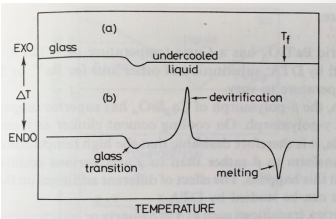
This graph comes from a so-called "differential thermal analysis". It is studying the effects of temperature on glass.
I don't understand what the difference between "glass transition" and "devitrification" is, and why one would be endothermic and the other would be exothermic.
I'm having trouble analysing these types of graphs. Does anyone know of a simple source online that I could check out?
